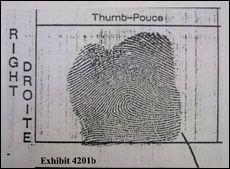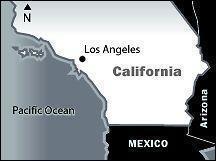 |
 |
|
|||||||
The Reckoning
"This trial is going to be about a young man who fled a war-torn country of Algeria, was able to go to France and finally to Canada," federal public defender Jo Ann Oliver said in her opening statement.
"This young man was and is a very quiet person, a religious person and probably a very gullible person," Oliver said. "These same qualities, in some cases virtues, are what led to his undoing. He was used and even abused by so-called friends, and then left alone here in the United States."
And they faced an intimidating adversary: Jean-Louis Bruguière, the renowned French terrorist-tracker. Bruguière flew in from Paris to help the prosecution. He entered the courtroom and took the witness stand without even a glance at Ressam, as if the Algerian he had pursued for years was an inconsequential bug.
The prosecution wanted to present Bruguière as an expert witness. Bruguière could testify about al-Qaida, its training camps and how Ressam fit into the network.
Prosecutor Steven Gonzales asked Bruguière about Ressam's role in the Montreal cell. Did it change after Ressam returned from training camp in 1999? "Ressam undoubtedly took a higher role in the group, especially after Fateh Kamel's arrest," Bruguière said. He went on for an hour, connecting Ressam to the trafficking of fake passports used by the terror network. Coughenour decided that allowing the French magistrate to testify as an expert on terrorism would be unfair to Ressam. While conceding Bruguière was "an expert whose credentials are breathtakingly extraordinary," the judge said "the force of his reputation would carry the risk that the jury would not focus on hard facts" of Ressam's case. The fingerprints of al-Qaida were all over Ressam's plot, but the term was never uttered in front of the jurors. Bruguière returned to France disappointed. Once again, he was having a tough time getting out his message about Islamic terrorism. Even without Bruguière, the evidence against Ressam was overwhelming. Elemental was testimony from Canadian officials who told what they had heard, seen and found at Ressam's apartment.
That testimony almost didn't happen. Two days before the trial opened, the government in Ottawa was telling Canadian officials not to testify. The Canadians worried that their intelligence secrets might be revealed in questioning by Ressam's defense team. Under intense pressure from incredulous U.S. Justice Department officials, the Canadians gave in.
At 33, Ressam would likely spend the rest of his life on American soil and die in one of its prisons. Through 16 months of detention and trial, Ressam stayed true to his training and maintained the secrets of his jihad. But after his conviction, he was shaky — isolated from family and his Islamist brothers, and still taking medicine for the malaria he had caught in the Afghanistan camps. He grew attached to his lawyers, in particular to Oliver, a small, light-haired woman fluent in French. He would not shake hands with her, as he did with his male lawyers, but he spoke to her gently. Her terrorist client, Oliver said, was "very sweet. Very polite." Ressam confided to his lawyers that he had found the trial surprisingly fair. The judge had treated him respectfully. The experience was not at all what he expected of the country he had been taught to hate. Ressam also told Oliver he was unsure of the morality of his plan to massacre innocent holiday travelers. He said he needed to study the Quran to see if he had misunderstood passages. So when Justice Department lawyers offered a deal to reduce his sentence, Ressam was ready to listen. The terms were simple: His minimum sentence would be cut in half, to 27 years. In return, he had to testify against an associate, Mokhtar Haouari, and others. He had to reveal all he knew about al-Qaida — plots, training, tactics. Ahmed Ressam became a terrorist turncoat.
On May 10, 2001, FBI Agent Fred Humphries questioned Ressam, the first of dozens of interviews. The information was invaluable — and terrifying.
He also confirmed one of the greatest fears of the CIA, FBI and other intelligence agencies: The camps had trained thousands of men in chemical warfare. Ressam told Humphries about putting on a gas mask, then watching as an instructor put a small dog in a box. The man added a small amount of cyanide and sulfuric acid, creating poison gas. The dog convulsed and died.
If you place this cyanide gas box near the air intake of an office building, the instructor had said, many people can be killed.
|
|
|||||||||||||||||||||||||||||||||||||||||||||||||||||||||||||||||||||||||||||||||||||||||||||||||||||
|
The Terrorist Within | Reprints seattletimes.com home |


